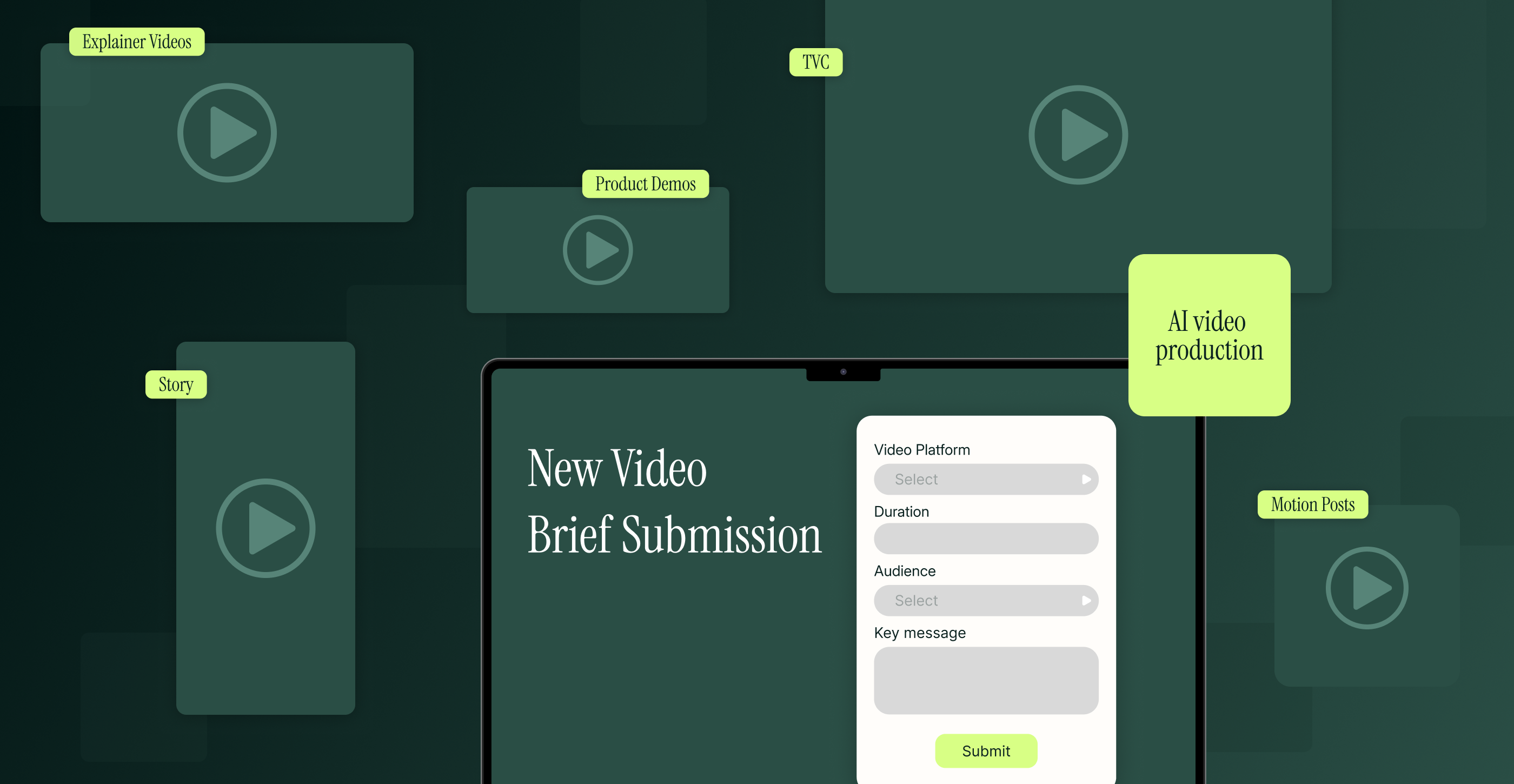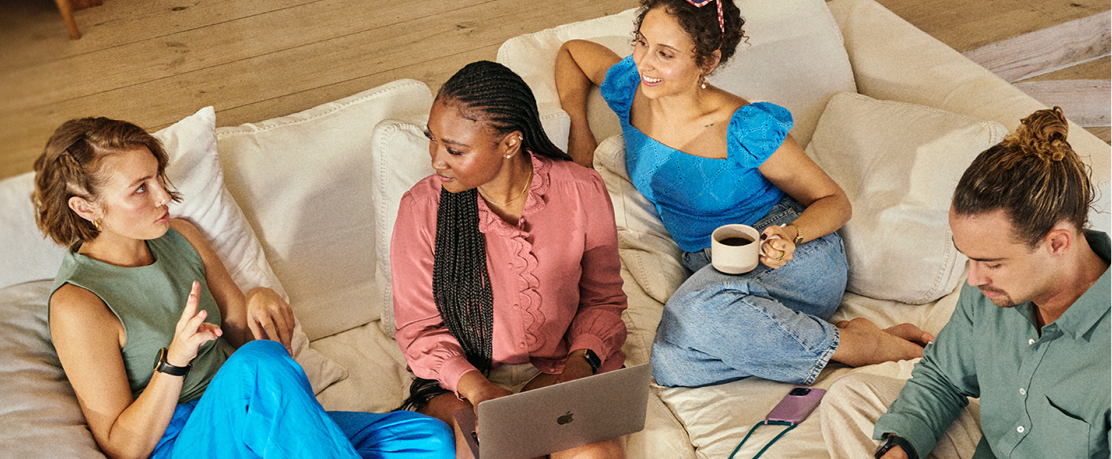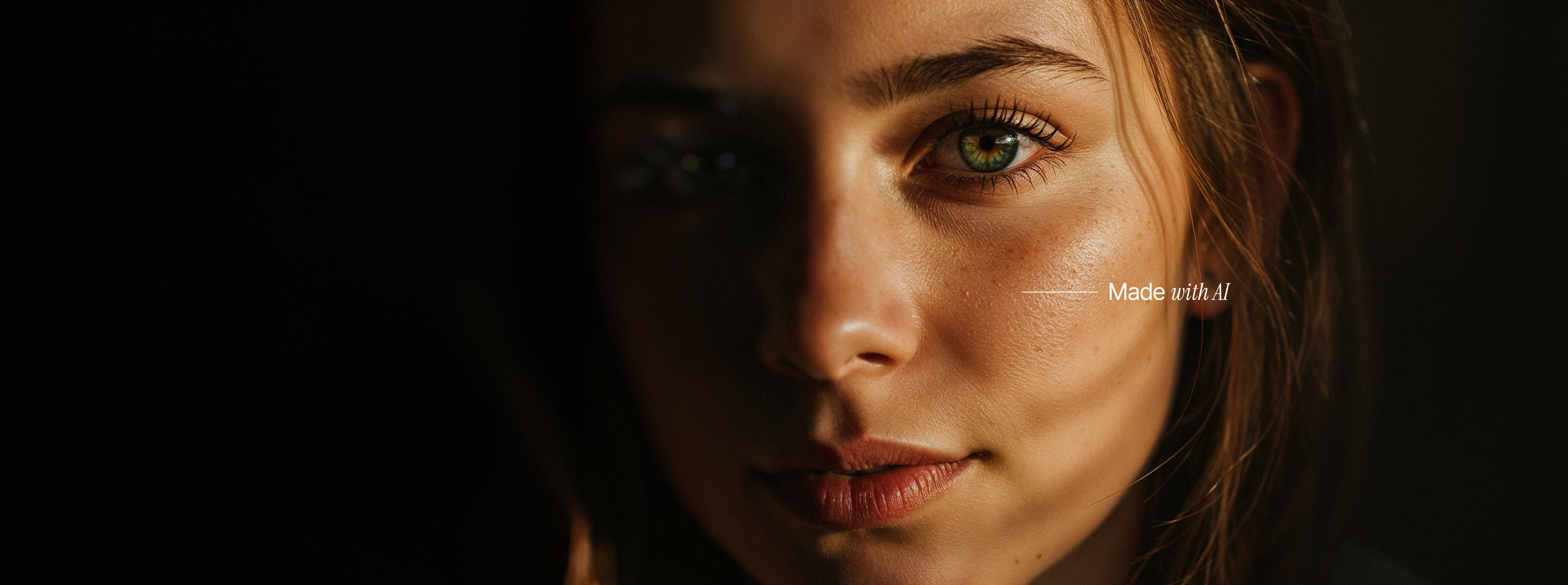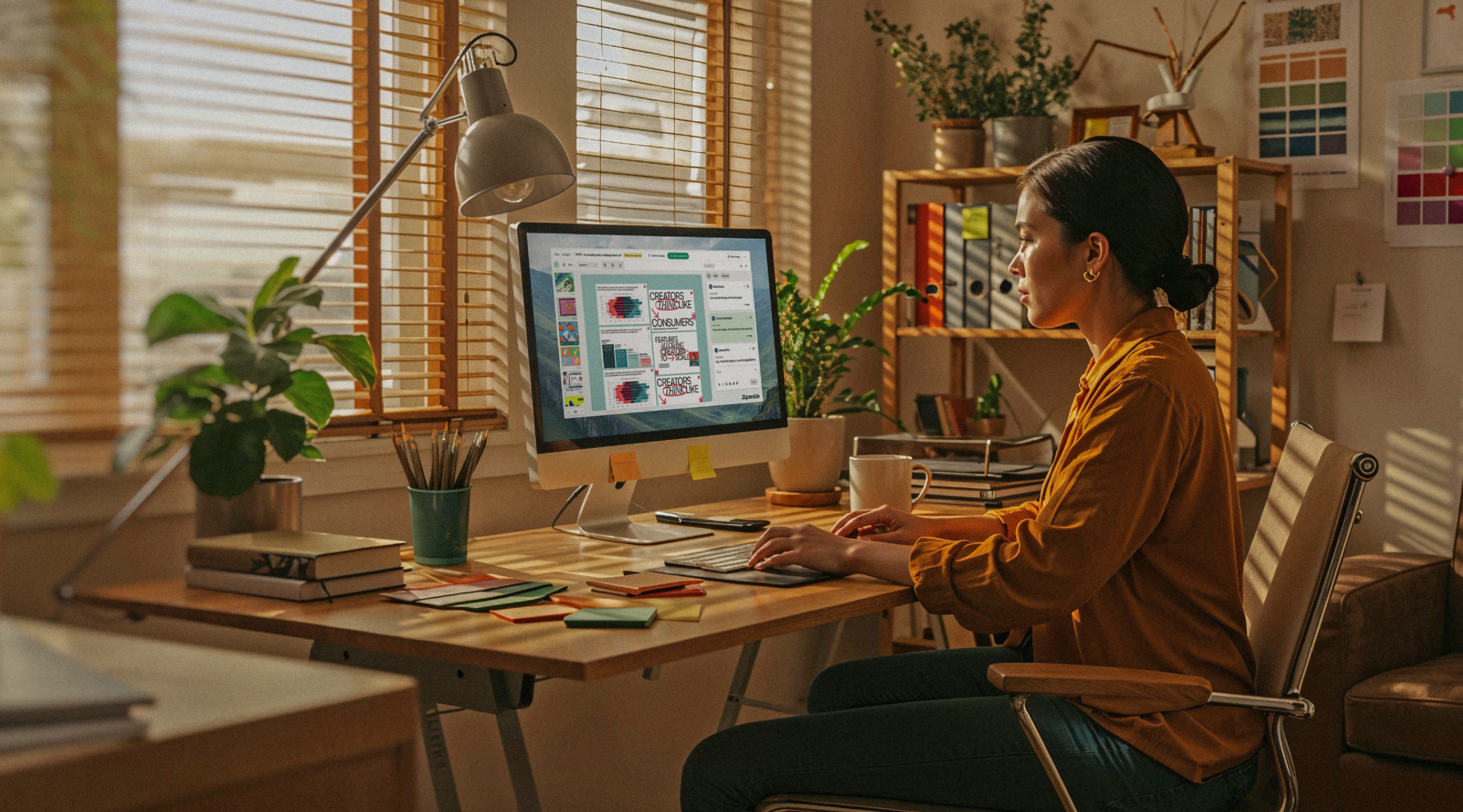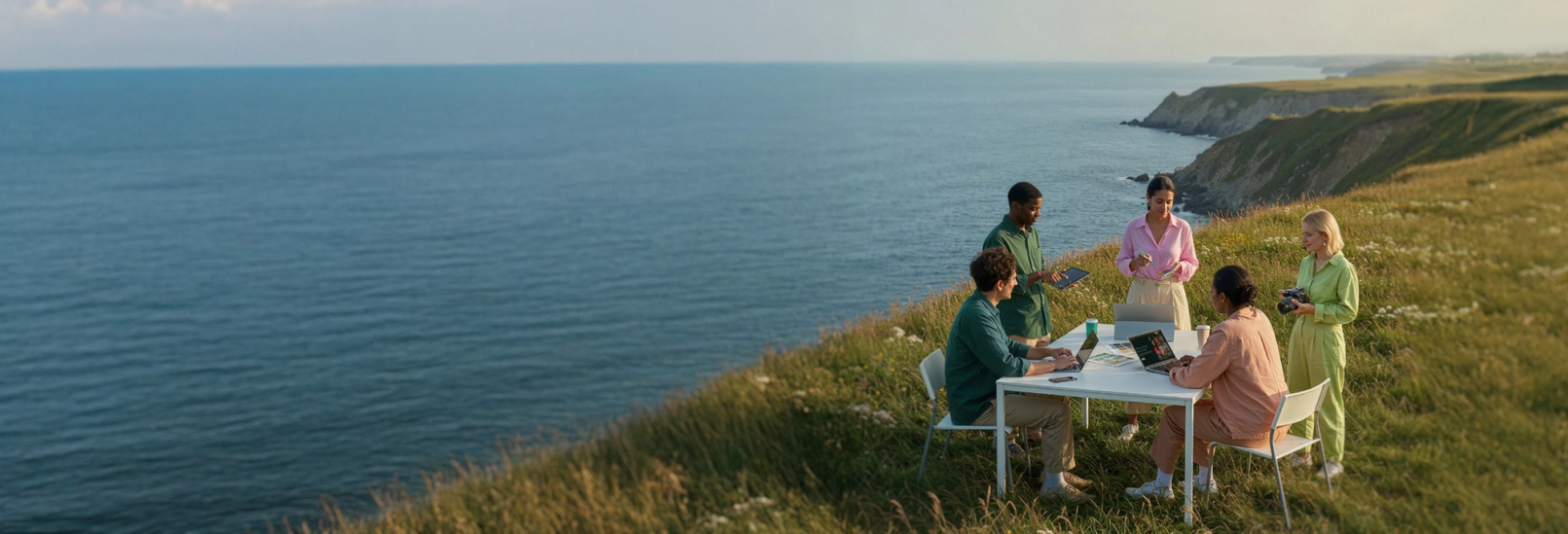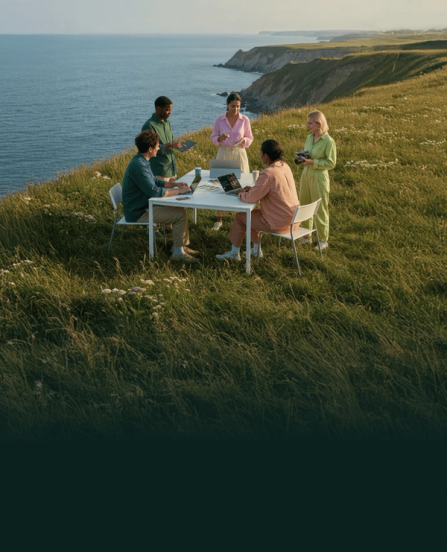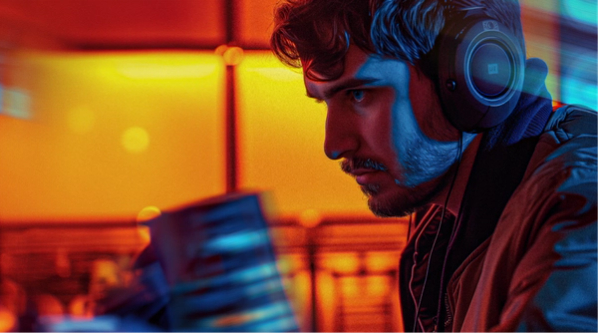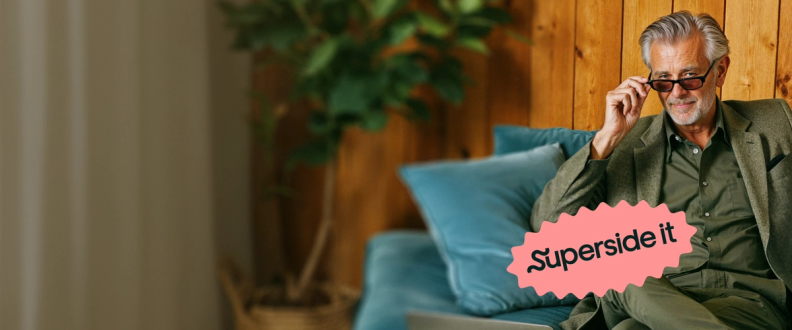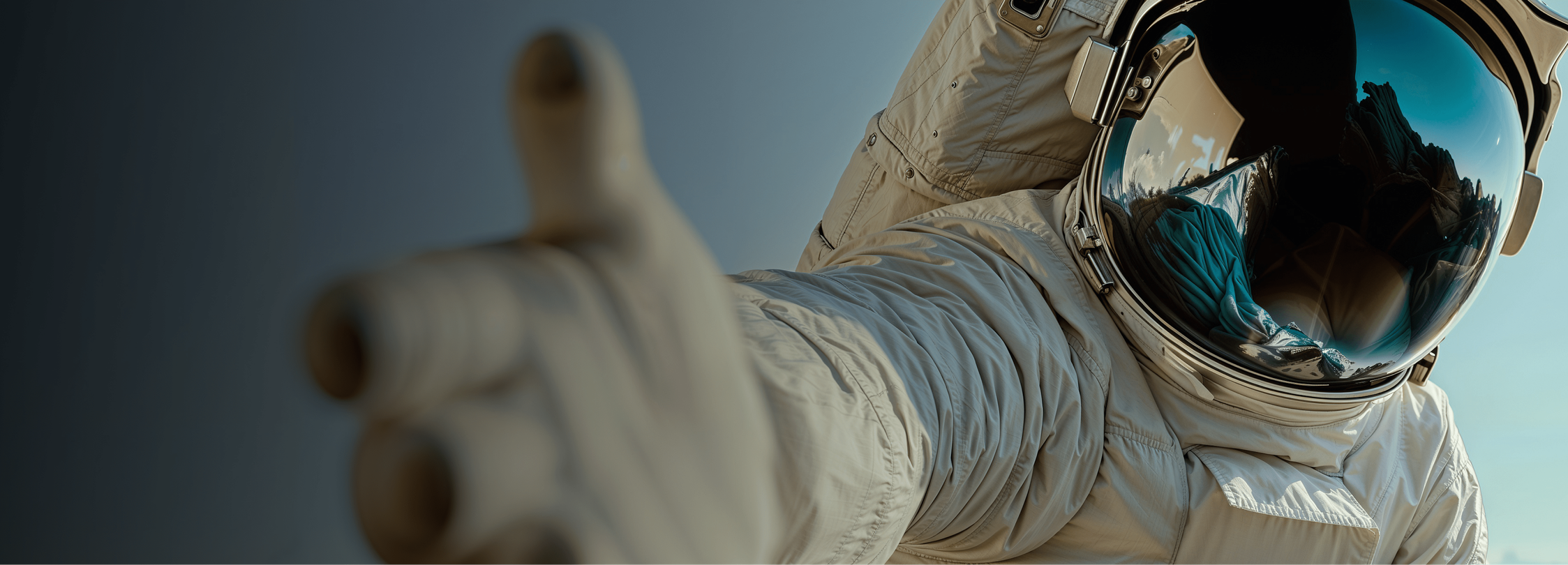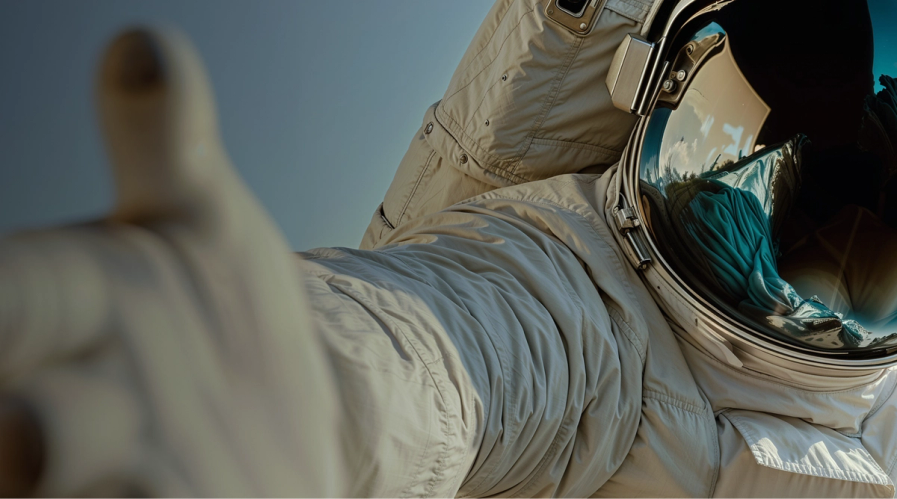9 AI marketing campaigns pushing creative boundaries in 2025

Artificial intelligence is an incredible tool that can help brands reach their target audiences through innovative campaigns. For enterprise leaders, the stakes are high: Adopt AI or risk losing ground. Explore real AI-driven marketing campaigns and learn how to use the tech to deliver speed, scale and incredible results.
AI is no longer just a novelty or a behind-the-scenes efficiency tool. The tech has matured to the extent that it’s shaking up marketing’s creative and strategic core.
The world’s top brands don’t just use AI to automate tasks or deliver efficiencies. They use AI technology as a creative co-pilot that speeds up ideation, experimentation, personalization and more.
In this article for enterprise marketing leaders, heads of creative, brand strategists and innovation leads, we explore nine AI-powered campaigns that demonstrate how the technology contributes to real-world marketing success. We start with two Superside examples, and then unpack seven more AI campaign case studies.
Stick with us as we explore why today’s marketing teams should embrace AI, how to determine whether an AI tool belongs in your marketing stack, and why Superside should be your go-to creative partner.
Why you should use AI in your marketing campaigns
Big brands don’t think small. In any given week, they produce hundreds of creative assets for multiple channels and markets. If you still use traditional marketing tools and methods, good luck trying to keep up with their output. In the constant flow of assets they produce and publish, yours is likely to be missed.
It has never been more important to be flexible, experimental and, yes, adventurous. If you don’t ride the AI wave now and regularly take a deep dive into its creative possibilities, you risk being left behind.
Instead of overloading their creative teams (a problem for many brands), today’s top enterprise brands use generative AI to speed up ideation, automate content personalization and scale creative production. Tools like ChatGPT, Midjourney and Adobe Firefly help them to iterate campaign concepts fast, while predictive analytics allows them to improve campaigns in real time.
Typically, creative teams work side by side with AI to produce standout work that helps them gain a competitive advantage. The tech doesn’t replace the creatives; it multiplies their impact.
This blend of technology and human ingenuity is fast becoming the foundation of exceptional marketing campaigns. In fact, it’s the golden thread that runs through the artificial intelligence marketing examples you’ll see further down.
For a closer look at how to adopt AI in your creative workflows, explore our Accelerating AI Adoption Guide and our new AI report on the impact of artificial intelligence in creative workflows:
Why Superside leads the way in AI marketing
There’s a reason why Superside’s AI campaign case studies are listed first in the nine standout AI-powered campaigns below.
As the world’s leading AI-powered creative service, Superside combines an always-on team of top-tier creatives, advanced AI tools and workflows, and a robust project management platform to deliver high-quality work faster and more cost-effectively than most.
We embed AI excellence deeply into both our internal and external creative workflows to simplify task routing and asset versioning. We also build brand-safe QA layers into every step of our hybrid AI-human production process. This step gives our customers the confidence that their brand identities remain 100% intact as they scale their campaigns.
Trusted by top enterprise brands, Superside delivers work up to five times faster and at 40% lower costs than traditional agencies. The technology also helps us quickly scale concept development, swiftly test and iterate paid social campaigns and localize video assets in large global campaigns.
We also don’t just deliver social media campaign assets at speed. Our services include everything from web design and video production to AI consulting and marketing strategy, all covered under a flexible subscription plan. And Superspace, our AI-powered creative management platform, keeps projects on track, from initial brief to final delivery.
With us, you get access to a single creative powerhouse to fulfill all your creative needs.
Now that you know why Superside should be your creative team’s creative team, let’s look at nine campaigns that took AI marketing to the next level.
9 AI marketing campaigns that pushed creative boundaries
Brands that master AI in marketing already dominate our feeds and screens. Not sure which campaigns were produced with AI’s help?
This roundup highlights a few superb artificial intelligence marketing examples and reveals how they pushed creative boundaries.
1. Superside’s Q2 2025 campaign video
Superside required a high-quality, innovative video for our Q2 2025 ad campaign. We wanted to create an emotive video that captured the moment when great creative work lands.
With tight timelines and high expectations, we turned to AI as a collaborator to help us balance speed, innovation and narrative quality. We used various tools to produce everything from storyboards, visuals and motion to voiceover and sound.
For example, our team built a cohesive visual world with Visual Electric, refined the script with ChatGPT and polished voice-overs with ElevenLabs. To transform static frames into dynamic scenes, AI platforms like Runway, Kling and Google Veo were put to good use. Our exceptional creatives guided the narrative, pacing and tone of the video to ensure it perfectly reflected the campaign vision and brand.
- Results: Thanks to AI, our team produced the video 40% to 60% faster than it would have taken us with traditional production methods.
- Enterprise takeaway: This Superside AI case study clearly demonstrates how teams can use AI to speed up creative production, deliver professional-quality results and maintain brand integrity.
2. Superside’s launch-ready AI rebranding campaign
To build awareness about Superside’s AI expertise, we challenged ourselves to use our own creative services and AI expertise to execute a complete, AI-first rebrand in six months, validating our value proposition for enterprise customers. We tapped into various AI tools to generate images, run visual experiments and fast-track the production of asset variations.
Our creative team led the charge, shaping the story, refining the designs and ensuring that every creative asset reinforced the Superside brand and narrative, inspiring confidence as a strategic partner, not just a production vendor. Our team’s knowledge and expertise turned AI’s raw potential into a cohesive rebrand, viewing the process as a sprint rather than a slog.
- Results: In just 6 months, we ideated, created and launched landing pages, video ads, social media posts and generated an image library for another 12 months from a single foundational photoshoot, which unlocked creative capacity that would have been too expensive before. Using AI custom image models, we managed to get 10X faster image creation, 75% less time spent per image and 85% lower cost per image.
- Enterprise takeaway: This Superside AI case study demonstrates that human expertise combined with AI opens up incredible creative potential. This approach can also dramatically cut time and costs. Use AI for repetitive tasks and free up your creative teams to drive strategy, craft standout stories and execute ideas faster.
3. Coca-Cola’s AI-generated holiday ads strategy
Coca-Cola wanted to engage its global target audience with another standout, emotive holiday campaign. In 2024, they also wanted to use the latest technology to speed up production and firmly place themselves in the era of AI video ads.
The brand worked with three creative studios to produce the season’s holiday commercials. Coca-Cola’s creative agencies used tools like Leonardo, Luma, Runway and Kling to generate environments, scenes and motion. AI also helped the teams to test multiple creative concepts quickly.
Classic Coca-Cola holiday scenes (e.g., snowy landscapes, trucks and polar bears) were all produced with AI’s help.
- Human role: While AI co-created many of the visuals and automated some processes, the studios’ creative professionals remained firmly in control. Strategists and filmmakers crafted the storyline, emotional beats and overall pacing. In turn, editors, animators and brand guardians curated outputs from the AI models to ensure the ads felt distinctly “Coca-Cola.”
- Results: The campaign reached millions of viewers worldwide across YouTube, TikTok and television. Despite mixed sentiment (many consumers felt the ad lacked emotional resonance), the experiment positioned Coca-Cola as one of the first global brands to fully embrace AI-generated holiday ads at scale.
- Enterprise takeaway: Let AI marketing tools help you scale creative production and test ideas quickly. This gives your creative team the bandwidth to focus on strategy, campaign narratives and your creative assets’ potential for connection.
4. Nike’s A.I.R. (Athlete Imagined Revolution) campaign
(Source: Nike)
For a fascinating project, Nike approached 13 elite athletes across multiple disciplines to co-create iterations of its Air platform. The aim was to integrate each athlete’s identity with design innovation to produce several visionary footwear prototypes.
After in-depth interviews in which Nike’s teams probed the athletes on everything from their preferred styles to their personal narratives, the design team translated the insights into AI prompts. Generative AI models then produced hundreds of visual explorations (think different textures, forms, colors, structures) in a couple of days.
- Human role: The designers and athletes collaboratively filtered, refined and evolved the strongest AI concepts. Nike’s creative team then used sketches, computational modeling and 3D printing to produce final concept prototypes for each athlete.
- Results: The brand unveiled 13 concept sneakers at its Paris “Nike On Air” event, all of which were AI-inspired, athlete-driven and digitally fabricated.
- Enterprise takeaway: Brands that combine generative AI with human judgment and domain expertise can dramatically speed up their creative ideation cycles.
5. H&M’s AI digital twins campaign
(Source: Business of Fashion)
In early 2025, H&M announced plans to replace some of its fashion models with AI-generated digital doppelgängers. The aim was to demonstrate the innovative use of generative AI in fashion.
With AI’s help, the brand created 30 hyper-realistic digital twins of real models who could pose, move and adapt themselves. With these models, H&M could rapidly generate diverse, scalable assets for use across multiple marketing channels and campaigns.
- Human role: H&M’s creative teams collaborated closely with AI specialists to design and refine the digital twins. It was essential to ensure that each digital model reflected the real model’s individuality. The creative teams also crafted the campaign narrative, set the creative direction and enforced ethical guardrails to ensure the technology enhanced rather than replaced human artistry.
- Results: The campaign redefined what’s possible in terms of visual storytelling, delivered authentic multi-channel content for H&M, and set a benchmark for the responsible use of AI in creative marketing (H&M made sure the real models owned and controlled their digital twins).
- Enterprise takeaway: H&M’s campaign proves that when AI scales production and humans steer creativity, innovation flourishes. Use AI to expand your creative capability, but rely on your human teams to uphold brand integrity and ethical standards.
6. Roku’s AI-generated ad campaign
(Source: Tech Radar)
Tech company Roku used an AI system to analyze customer behavior (e.g., what people watch, when and on which of their streaming devices), along with demographic and customer data, to automatically generate tailored ad content for each segment.
The technology analyzed the customer data, identified the audience segments, and drafted personalized ad and email content optimized for each group.
- Human role: Roku’s marketing and creative teams shaped the ad campaign narrative, refined the creative elements and ensured every message aligned with Roku’s brand voice and identity.
- Results: Thanks to the human-AI collaboration, Roku could launch highly targeted ad and email campaigns faster and more cost-effectively than before. The AI-powered campaign also led to stronger engagement across segments.
- Enterprise takeaway: Use artificial intelligence for data analysis and to help you create personalized campaigns. But remember: Your human teams should stay firmly in control.
7. Popeyes “(w)Rap Battle” campaign
In response to McDonald’s relaunch of the Snack Wrap, Popeyes used AI to produce a humorous diss track. The video turned a lighthearted rivalry into a creative marketing win.
Popeyes used AI tools (e.g., Suno to generate music and Veo for video visuals) to help write, compose and produce the track in just a few days.
- Human role: The brand’s creative and marketing teams guided the concept, wrote the lyrics, and directed the tone and humor of the track.
- Results: Popeyes produced a highly watchable video in under three days. The video featured dynamic wrap shots, bold typography and AI-enhanced visuals. Commentators praised it as one of the most entertaining AI-assisted brand campaigns created to date.
- Enterprise takeaway: AI can speed up production and enhance creative output, but the best results are achieved when human teams lead the narrative. AI tools with clear creative direction can help your brand respond to cultural moments quickly and authentically.
8. Kalshi’s AI-Generated NBA Finals commercial
Finance platform Kalshi launched a bold campaign on a shoestring budget during the 2025 NBA Finals. The ad featured a surreal montage of AI-generated scenes: A farmer submerged in a pool of eggs, an alien drinking a beer and a man in a cowboy hat holding a chihuahua, among other bizarre characters.
AI tools generated visuals, storyboards and character animations that compressed weeks of production into hours. AI also streamlined video creation and sped up iteration on creative concepts.
- Human role: Kalshi’s marketing team directed the creative strategy, refined scripts and ensured every element tied back to the brand’s mission of trading on real-world events.
- Results: The team produced a witty, visually engaging video ad in under 72 hours for just $2,000. The spot aired during the NBA Finals broadcast and got widespread attention.
- Enterprise takeaway: Brands can use AI to cut production time and costs, yet still deliver highly original work that capitalizes on cultural moments.
9. Hettich’s “Roast the Room” campaign
In an attempt to boost brand awareness and engagement among younger audiences, global furniture hardware brand Hettich launched its “Roast the Room” campaign to showcase its products in a playful, relatable way.
AI tools generated humorous, hyper-realistic visuals of messy rooms, automated video production and accelerated content creation across multiple formats.
- Human role: Hettich’s creative team developed the campaign’s witty tone, directed the narrative and made sure every content piece showcased the brand’s personality and humor.
- Results: The campaign achieved an impressive level of engagement on Instagram, dramatically increased brand visibility and inspired a wave of user interaction and shares.
- Enterprise takeaway: Use AI not just to create content, but to invite participation and co-create with your audience. Hettich turned its AI-generated visuals into an engagement opportunity. They asked users to critique (or “roast”) the messy rooms and then used AI once more to produce beautifully styled rooms that featured their products.
How to assess if AI marketing tools belong in your next campaign
In the B2B and tech world, a high demand for campaign assets and repetitive tasks (e.g., asset versioning and A/B tests) can slow teams down and drain creativity.
If your team is stretched to the limit, AI-powered workflows can help you scale your campaigns efficiently. With your brand guidelines and positioning statements baked into your workflows, you can also rest assured that your brand integrity stays firmly intact.
But it can be hard to figure out which AI tools to use and when. Look for these signals that your process is ready for AI augmentation:
- Your team can’t keep up with the pace of asset production.
- Repetitive creative tasks burn valuable bandwidth.
- Your team manages localized campaigns across multiple regions and/or languages.
- You need to experiment rapidly with different versions of paid media assets.
Also, ask yourself:
- Do you already have clear brand guidelines and asset libraries in place?
- Do your creatives spend more time on delivery than on strategy and innovation?
- Do you run campaign types that repeat often (e.g., webinars, product launches or seasonal promotions)?
If you answered “yes” to most of these questions, your organization is probably ready for AI-assisted workflows.
Out with the old, in with AI tools to scale creativity
AI adoption doesn’t simply involve clever prompts or subscriptions to all the latest tools. The technology also shouldn’t replace human creativity. It’s best to put the right AI tools in the hands of exceptional creatives, well-versed in prompting.
Believe us, when the right tools and humans combine forces, they can deliver excellent, on-brand work faster and on a much bigger scale than ever before.
Here, Superside leads the way. Much more than a creative partner, we help top enterprise brands scale their marketing content and output with the kind of AI-human hybrid efficiency most brands still only dream of. In fact, we’ve perfected the playbook for scalable, brand-safe AI creative.
Ready to scale your creative output with AI-powered workflows?
Let Superside power your AI marketing campaigns for you. With 90% of our creatives AI-certified and over 40 custom workflows, we’ll seamlessly shift you into the next era of AI-enhanced creativity.
FAQs
Emanuel is a Content Specialist at Superside. With the knowledge that three languages (and counting) and digital marketing can serve a creator, he has helped B2Bs from multiple industries to write, optimize and scale their content game with compelling pieces that answers questions and solve problems. On Superside, Emanuel streamlines content ideas into powerful articles that guides you on how to use Superside multi-powered services to scale your business to the max.
You may also like these
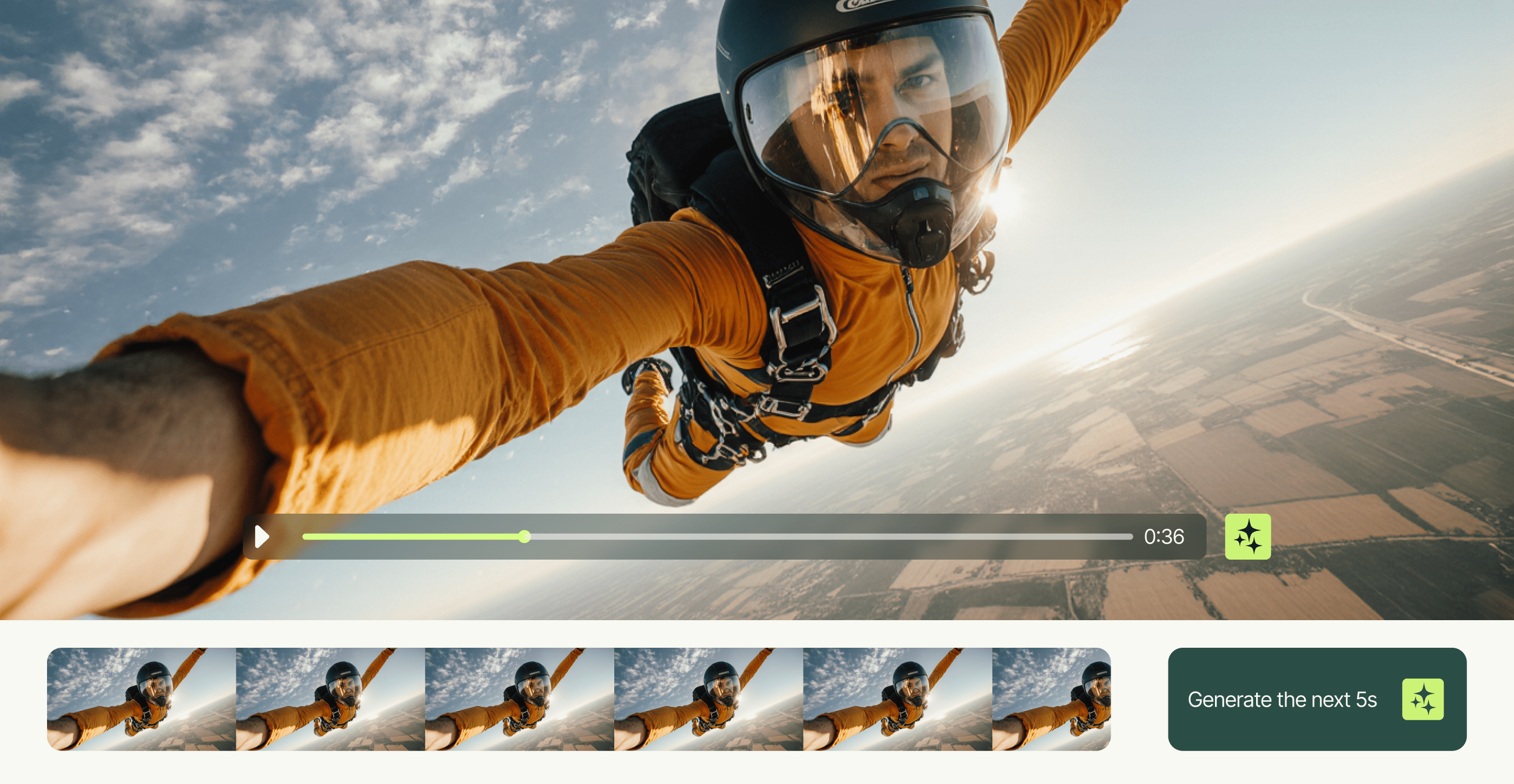
10 best AI video examples for inspiration in 2025
Video marketing continues to prove its impact. Viewers retain 95% of a message when they watch it on video, compared to 10% when they read it in text. And 89% of consumers love the format so much that they want even more branded video content.This demand has driven brands to explore innovative tools and production approaches over the last few years. AI has played a central role. In 2025, 41% of businesses used AI for video production, while another 19% planned to experiment with the tech in the near future.But the unprecedented demand for video means these tools alone aren’t always enough. In the enterprise environment, those who make a lasting impression deliver scale, consistency and fresh creativity. Many creative teams struggle to keep up without a strategic approach that combines AI excellence, top talent, streamlined processes and smart project management solutions.This article highlights exceptional AI-powered video examples crafted by Superside’s creative team, alongside standout work from other brands. We showcase work that tells powerful brand stories and unpack why each example matters for marketers who want to produce videos that win customers.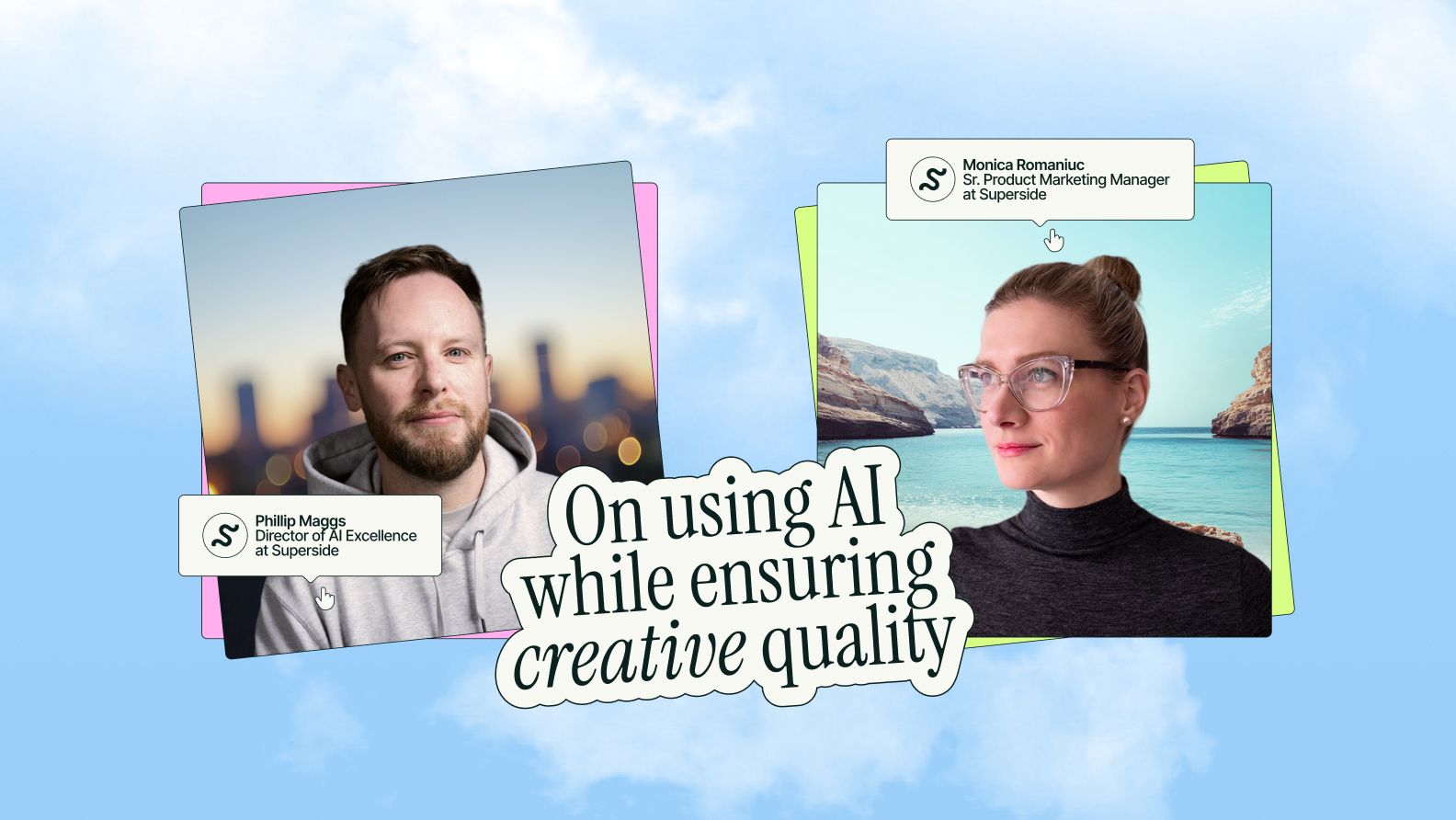
AI meets expertise: Inside Superside’s formula for quality creative
Will it look too “AI-y?” Will it sound too “AI-y?”When it comes to AI, many creatives and marketers share a common concern: Will it compromise the quality of their work?In our latest guide, Inside Great Creative Partnerships, Superside’s Phillip Maggs, Director of AI Excellence, and Monica Romaniuc, Senior Product Marketing Manager, confirmed this fear is unfounded—provided you’re doing it right. From quick tips to caveats, they shared:Where AI can provide value across creative and marketing workflowsWhy legacy stacks are a caveat (but not a lost cause)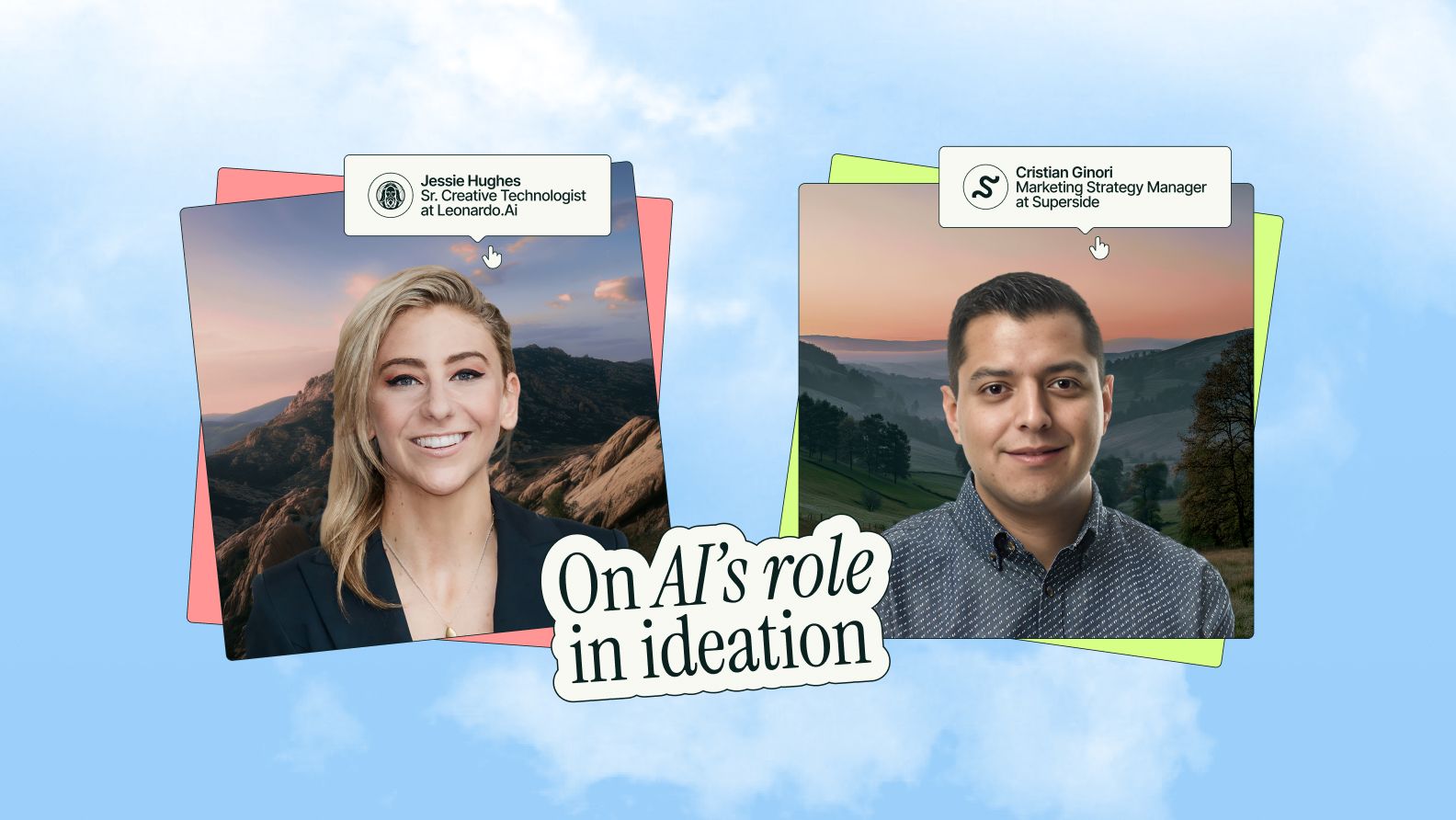
Ideating with AI: Inside a creative vs. marketing workflow
When generative AI gives you an eagle with two skateboards, lean in. When it gives you 10 angles for a campaign, choose wisely.In the ideation phase of her design workflow, Jessie Hughes, Senior Creative Technologist at Leonardo.Ai, embraces AI—accidents and all—to fuel greater creativity. By contrast, Cristian Ginori, Marketing Strategy Manager at Superside, takes a structured approach to brainstorming with AI, using systems to guide creativity toward strategic outcomes.Superside’s latest guide, Inside Great Creative Partnerships, digs into both approaches—and how AI helps creatives and marketers meet in the middle. Get a sneak peek of these insights, including:Why turning up the volume breeds better resultsHow to riff, refine and systematize with AI